Working from home can come with its own set of challenges, especially when it comes to sound. Echo in your home office can make calls and virtual meetings a bit tricky. Fortunately, there are some simple ways to tackle this issue and create a more comfortable workspace. Here are five tried-and-true methods to help you reduce echo in your home office.
Adding Greenery for Natural Sound Dampening
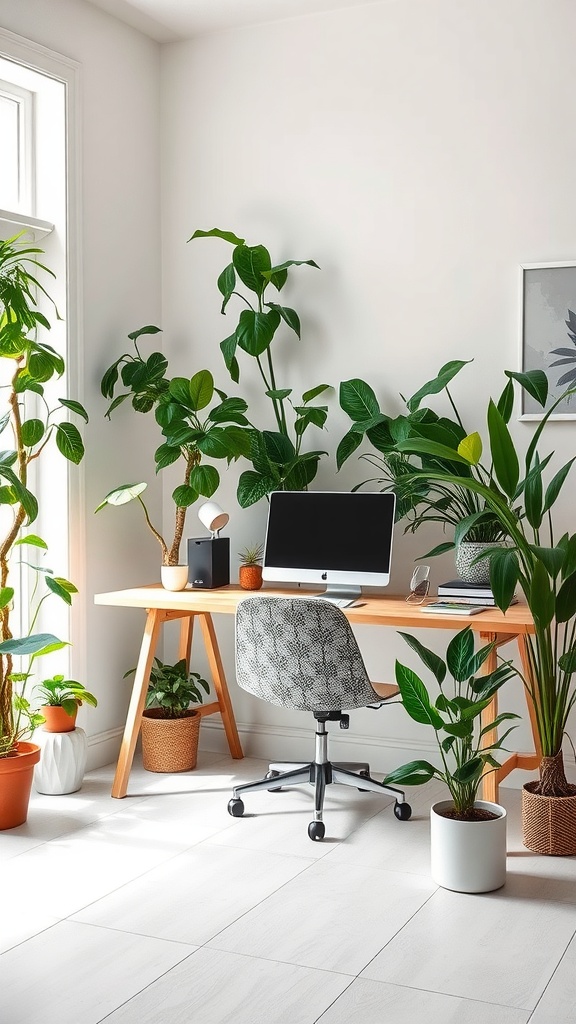
When it comes toWays to Reduce Echo in Your Home Office, adding plants is a simple yet effective strategy. The image shows a bright and inviting workspace filled with various indoor plants. These green companions not only enhance the aesthetic of your office but also serve a practical purpose.
Plants naturally absorb sound. Their leaves, stems, and soil can help to reduce reverberations in your space. This can be particularly useful if you have hard surfaces like tile or wood floors that tend to amplify sound. By incorporating greenery, you can create a more serene environment for work or video calls.
Besides their sound-dampening qualities, plants can improve air quality and boost your mood. So, as you look forWays to Reduce Echo in Your Home Office, consider filling your workspace with a variety of plants. Whether it’s a large leafy plant or several small ones, every little bit helps in creating a calmer atmosphere.
Incorporating Acoustic Panels for Enhanced Clarity
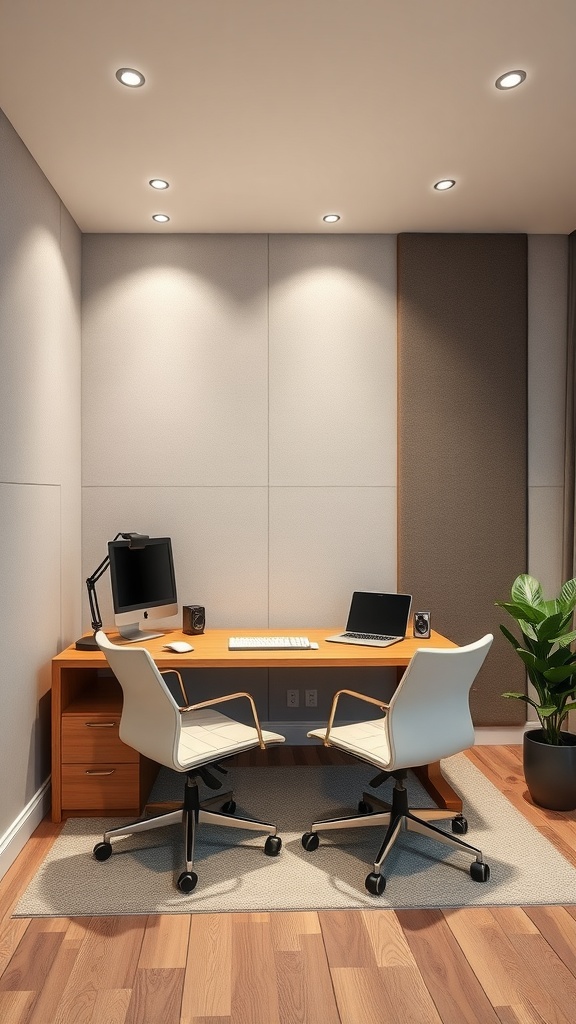
When setting up a home office, one of the biggest challenges can be echo and sound clarity. The image shows a well-designed workspace that incorporates acoustic panels, which are essential for reducing unwanted sound reflections. These panels help absorb sound waves, making it easier to communicate during calls or while working on projects.
You can see the smooth surface of the acoustic panels on the walls, which not only serve a functional purpose but also add a sleek look to the office. The neutral tones of the panels blend well with the warm wood of the desk and the light-colored chairs, creating a harmonious environment. This setup emphasizes one of the effective ways to reduce echo in your home office.
The presence of technology, like the monitors and speakers, showcases the need for a quiet space. By incorporating acoustic panels, you can enhance the clarity of audio, whether it’s for virtual meetings or listening to music while you work. It’s all about creating a comfortable and productive atmosphere.
Consider adding more panels if you find that sound still bounces around. Experiment with the placement to see what works best for your space. Remember, the goal is to create a sound-friendly environment that enhances your overall productivity.
Choosing the Right Flooring Materials
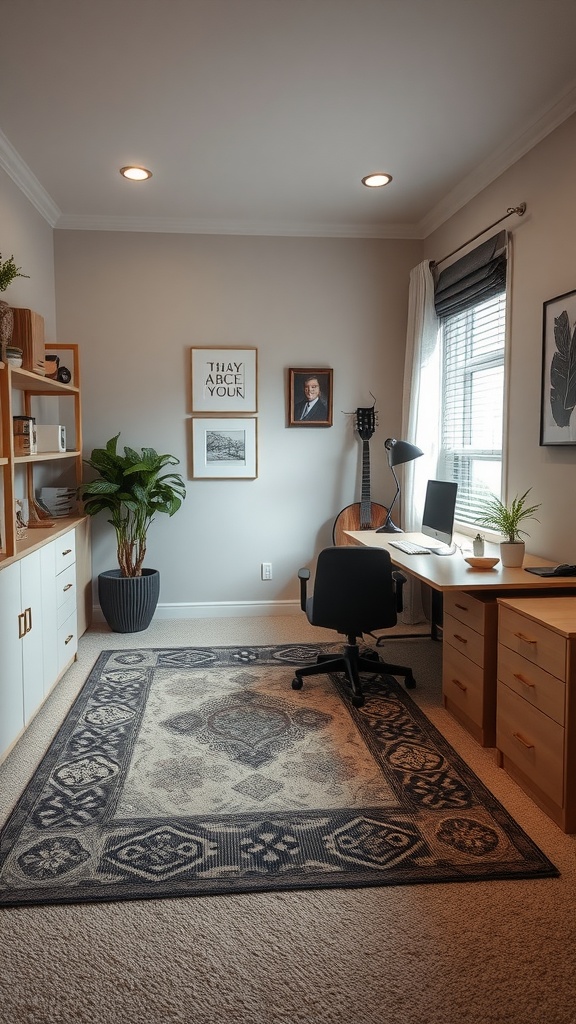
When setting up your home office, one key aspect to consider is the flooring. The right flooring can significantly help in reducing echo, making your workspace more comfortable and productive.
In the image, we see a cozy office with carpeted flooring and an inviting area rug. Carpets, like the one shown, are excellent for absorbing sound. They can dampen noise that would otherwise bounce off hard surfaces, contributing to a quieter environment.
Another flooring option is cork. Cork not only provides a unique look but also offers sound-absorbent properties. It’s a warm material that feels great underfoot, making it ideal for long work hours.
If you prefer hard flooring, consider adding rugs or mats. These can break up sound reflections and add texture to the room, just as we see with the patterned rug in the image. The contrast between the rug and the surrounding carpet helps to soften the sound.
Tile or hardwood floors are stylish but can amplify sound. Pairing them with thick rugs or soft furnishings can balance this out. Remember, incorporating various materials is one of the effective ways to reduce echo in your home office.
Arranging Furniture to Minimize Sound Reflection
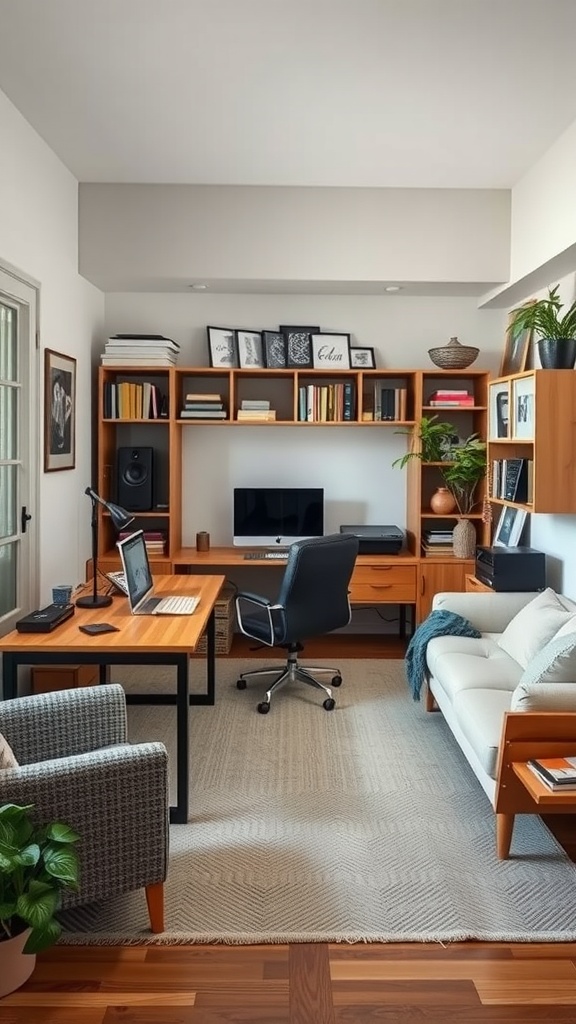
When it comes to Ways to Reduce Echo in Your Home Office, the arrangement of your furniture plays a significant role. In the image, you can see a well-organized workspace that promotes both comfort and effective sound management. The desk is placed strategically to create a barrier against sound waves, which helps in reducing echo.
Notice how the bookshelf is positioned against the wall. This not only provides storage but also acts as a sound absorber. Filling shelves with books and decorative items can make a noticeable difference. The softer textures of the sofa and rug further help in soaking up sound, preventing it from bouncing around the room.
Another thing to consider is the distance between furniture pieces. Like in the image, keeping items closer but not overcrowded allows for better sound absorption. When furniture is spaced out too much, sound waves can travel freely, leading to more echo. The cozy arrangement invites conversation while keeping the noise levels manageable.
Lastly, the addition of plants, as seen in the corner, can also contribute to sound absorption. They not only enhance the aesthetics of the space but also play a functional role in creating a quieter environment. So, when you’re looking for Ways to Reduce Echo in Your Home Office, give a thought to how you arrange your furniture. It can make a bigger difference than you think!
Utilizing Soft Furnishings for Sound Absorption
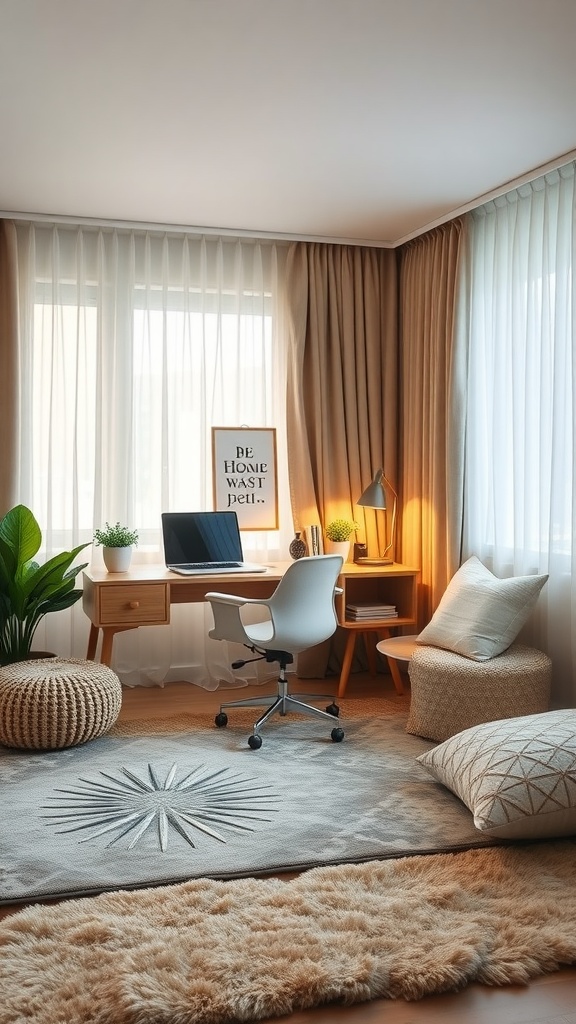
In your home office, every little detail matters, especially when it comes to sound quality. Soft furnishings can play a crucial role in reducing echo, making your workspace more pleasant for audio calls and meetings.
The image shows a cozy office adorned with various soft elements like plush cushions and a fluffy area rug. These items not only add comfort but also help absorb sound waves. When sound hits soft surfaces, it is muffled instead of bouncing back, which is key for echo reduction.
Consider adding a few throw pillows to your chair or sofa. They not only enhance the look of your space but also contribute to sound absorption. A nice, thick rug helps as well, especially if it covers a large area. This can significantly dampen noise and improve acoustics.
Don’t forget about curtains! The image features soft, flowing curtains that not only add warmth but can also soak up sound. Heavy drapes work wonders, especially in rooms with hard surfaces like wood or tile.
Incorporating these soft furnishings is one of the many ways to reduce echo in your home office. It’s a simple yet effective way to create a more focused and serene working environment.
